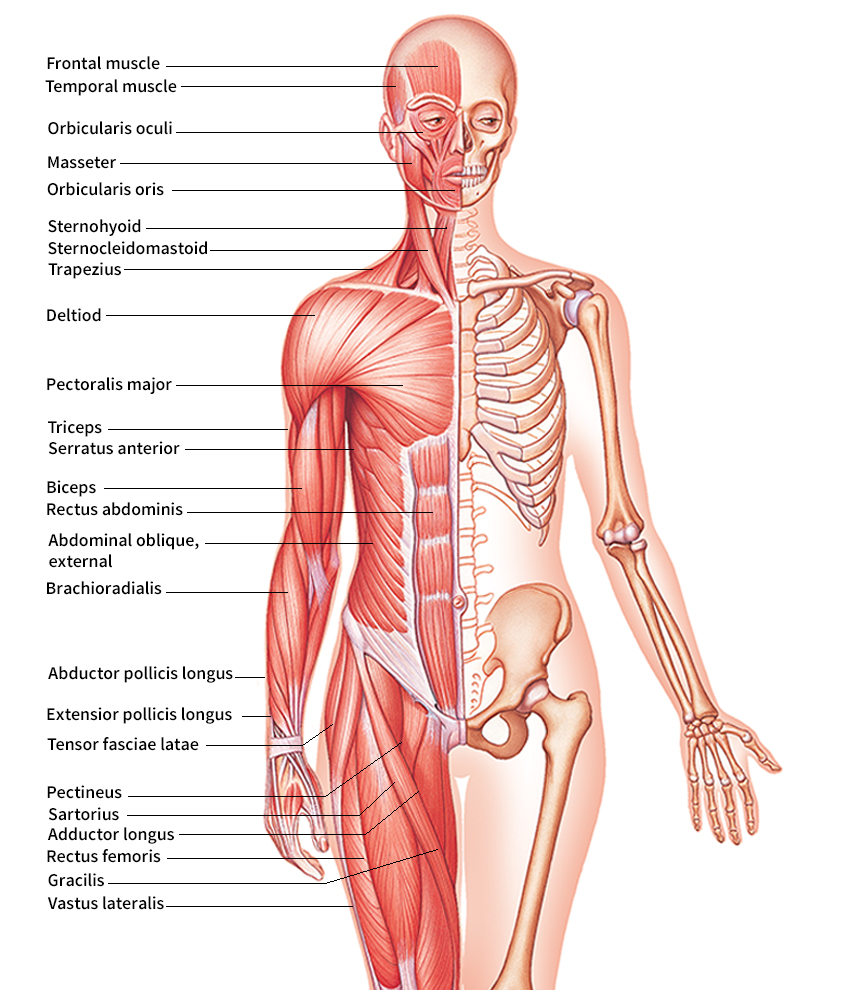Muscular system is the collection of over 600 skeletal muscles that enable the human body to move. Skeletal muscles are attached to the bones of the skeletal system . They provide the force to produce movement at joints . The muscular system is one of the body’s major organ systems.
Muscles.
Skeletal muscles work by contracting (drawing together). One end of the muscle is attached to a bone that does not move when the muscle contracts. This end of the muscle is called the origin. A muscle may have multiple origins. The other end, called the insertion, is attached to a bone that moves when the muscle contracts. Muscles of the muscular system often are named for their location, origin, number of origins, and insertion. The muscle’s shape and size, the direction of the muscle fiber, and the function of a muscle may also be indicated by the name. Some well-known skeletal muscles are the biceps brachii, often called the biceps; triceps brachii, often called the triceps; deltoid; rectus abdominis; external oblique; sternocleidomastoid; and gastrocnemius.

The muscles of the muscular system are all voluntary muscles. Voluntary muscles are those that operate under conscious control. Other types of muscles in the body include smooth muscle, which is involved with movements of the body’s internal organs, and cardiac muscle, which makes up the walls of the heart. Because they are not under conscious control, smooth muscle and cardiac muscle are known as involuntary muscles.
Movement.
Most skeletal muscles attach to two different bones and cross a moveable space or joint. When a muscle contracts, it gets shorter, pulling one bone closer to the other. For example, the biceps brachii muscle has its origin on the scapula ( shoulder blade) and its insertion on the radius, one of the bones in the forearm. The biceps brachii muscle crosses the elbow joint between these attachments. When the biceps brachii contracts, it pulls the forearm closer to the shoulder, generating the movement known as elbow flexion.
Each muscle is an independent organ with its own unique set of bony attachments and functions. Often, a group of muscles work together to produce a specific movement. For example, flexion of the elbow involves not just the biceps brachii but also the brachialis, located just beneath it. These muscles are called prime movers or agonists for elbow flexion. The triceps brachii crosses the elbow joint on the opposite side of the biceps brachii. When this muscle contracts, it pulls the forearm away from the shoulder, generating elbow extension. The triceps brachii is called an antagonist for elbow flexion because it generates the opposite movement.
